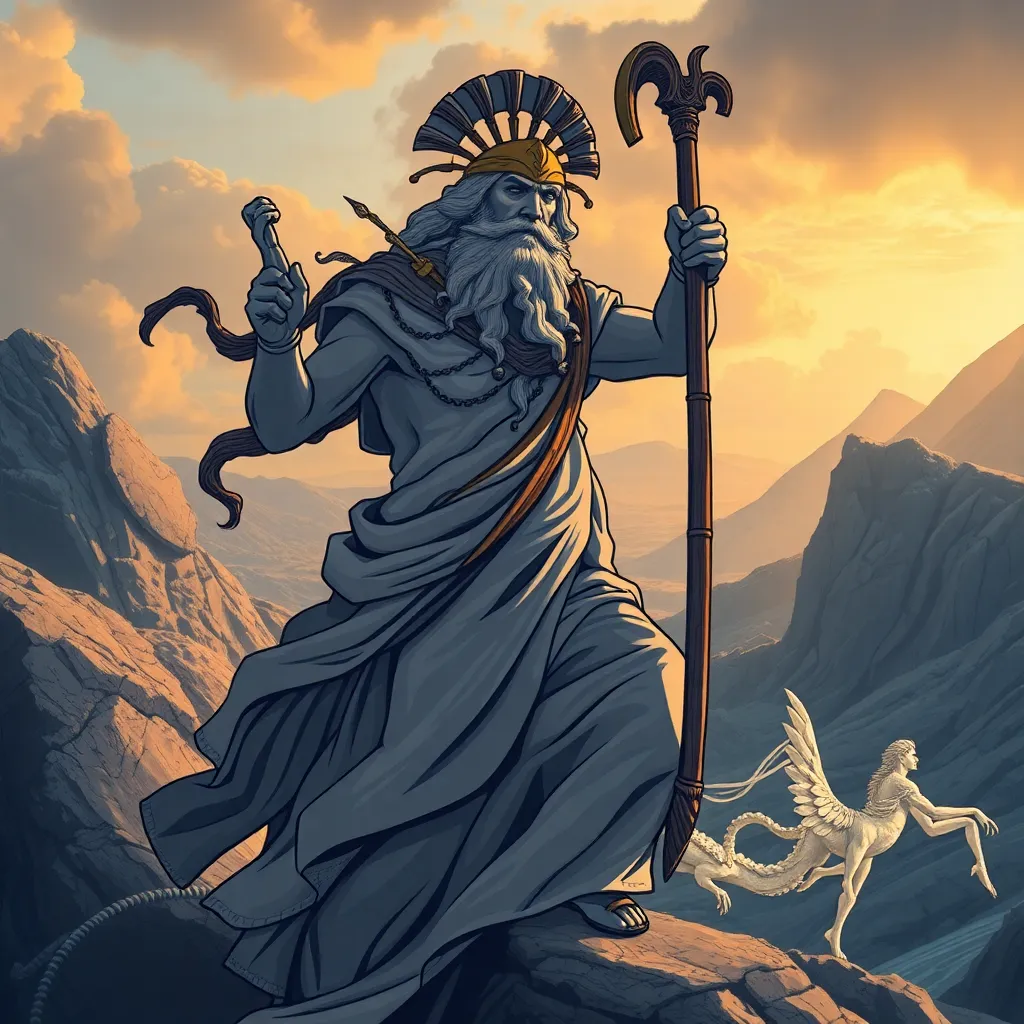Odysseus and the Hero’s Journey: A Classic Archetype
I. Introduction
The Hero’s Journey, a narrative framework identified by Joseph Campbell, describes the common patterns found in myths and stories across cultures. This journey typically involves a hero who goes on an adventure, faces and overcomes a crisis, and returns transformed. One of the most iconic examples of this archetype in literature is Odysseus from Homer’s epic poem, “The Odyssey.”
Odysseus, the clever king of Ithaca, embarks on a perilous journey home after the Trojan War, encountering numerous challenges that test his resilience, wit, and leadership. His story not only defines the essence of a hero’s journey but also represents the universal struggle for identity and belonging.
As a classic archetype, Odysseus exemplifies the complexities of heroism, making him a timeless figure in both ancient and modern narratives.
II. The Call to Adventure
The adventure of Odysseus begins against the backdrop of the Trojan War, a decade-long conflict sparked by the abduction of Helen, which required the participation of many Greek heroes, including Odysseus. However, unlike others, Odysseus initially shows reluctance to join the war.
- His cleverness leads him to feign madness to avoid conscription.
- His wife, Penelope, and newborn son, Telemachus, motivate his eventual participation.
This call to adventure is significant as it marks the beginning of Odysseus’s transformation from a devoted husband and king to a legendary wanderer whose fate is intertwined with the gods and mythological forces.
III. Crossing the Threshold
Odysseus’s departure from Ithaca symbolizes his crossing of the threshold into the unknown. As he leaves his home, he transitions from a respected king to a lone wanderer facing the vastness of the world.
The act of leaving home carries deep symbolism:
- It represents the loss of security and comfort.
- It signifies the beginning of self-discovery and the pursuit of knowledge.
Odysseus’s journey is not just a physical one; it is also a metaphorical journey into the depths of his character and the trials that await him.
IV. Trials and Challenges
Throughout his voyage, Odysseus encounters a variety of mythical creatures and challenges that test his resolve and ingenuity:
- Cyclops: Odysseus’s cunning is showcased when he devises a plan to escape the one-eyed giant Polyphemus.
- Sirens: Using beeswax to block his crew’s ears, Odysseus demonstrates foresight and leadership by tying himself to the mast to withstand their enchanting song.
The trials he faces are not solely physical; they are also influenced by divine intervention. The goddess Athena provides guidance and protection, while Poseidon, the god of the sea, represents the obstacles Odysseus must overcome due to his actions. Through each encounter, Odysseus learns valuable lessons about humility, respect for the gods, and the importance of camaraderie.
V. The Abyss: Facing Despair
Odysseus’s journey reaches a low point when he loses most of his crew due to various misadventures. This moment serves as a profound reflection on his leadership and the fragility of life:
- He confronts the reality of mortality as he witnesses the death of his men.
- He grapples with feelings of guilt and responsibility for their fates.
This abyss is not just a physical challenge but an emotional and psychological one, forcing Odysseus to reassess his identity and purpose as a leader. It is in this darkness that he begins to understand the weight of his journey and the sacrifices made along the way.
VI. Transformation and Revelation
As Odysseus navigates through trials and despair, he emerges with significant insights. His character evolves from a proud warrior to a wise leader who values intelligence over brute strength:
- He learns the importance of patience and strategic thinking.
- His humility grows as he recognizes the power of the gods and the forces beyond his control.
This transformation highlights the importance of wisdom and humility in true heroism. Odysseus’s experiences teach him that leadership is not just about strength but also about compassion and understanding.
VII. The Return Home
The journey culminates in Odysseus’s return to Ithaca, which holds great significance not only in terms of physical location but also in the realm of personal identity. Reuniting with his family, particularly Penelope and Telemachus, symbolizes the restoration of order and harmony in his life.
Upon reclaiming his throne, Odysseus reflects on how much he has changed:
- He is no longer just a king but a man who has faced the depths of despair.
- His journey has enriched his identity and understanding of himself and his role as a leader.
The impact of his journey resonates deeply within him, shaping his relationships and his approach to leadership.
VIII. Conclusion
In summary, Odysseus serves as a quintessential hero archetype, embodying the essence of the Hero’s Journey. His adventures illustrate the universal themes of struggle, transformation, and the quest for identity, making his story relevant even in contemporary narratives.
The enduring legacy of Odysseus’s journey continues to inspire modern storytelling, reminding us that every hero’s path is fraught with challenges that ultimately lead to self-discovery and growth.
https://www.youtube.com/watch?v=dnVRN1EK4fk




